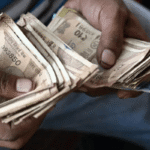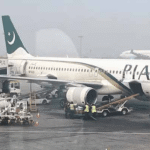ISLAMABAD: The Power Division has presented the draft of a new power tariff design with the Finance Ministry, per the instructions from the Special Investment Finance Council (SIFC).
The current tariff regime is causing an economic collapse, thus this was done to seek approval from the IMF to stimulate economic growth.
Top officials in the SIFC Secretariat and energy ministry told The News that the Apex Committee of the SIFC met on January 3, 2024, and instructed the Power Division’s top mandarins to reform the power tariff regime so that economic activities might accelerate.
The News was informed by the acting minister of energy that the electricity Division had finished reorganizing the current system of electricity tariffs and had forwarded it to the Finance Ministry, which would pursue it with the IMF.
Currently, 28% of the cost of each power unit is variable and 72% of the cost is set. However, when it comes to revenue, fixed costs are only 2% and variable charges are 98%. According to the officials, the relevant authorities have discovered an imbalance between the cost and revenue structure of the power tariff, and about 29 million domestic consumers, or 98% of all consumers, are receiving a subsidy of Rs631 billion. The government is subsidizing Rs158 billion of the Rs631 billion total; the remaining amount is borne by the individual.
Because of the government’s current tariff structure, which charges the export industry 14 cents for electricity, Pakistani products are no longer competitive when compared to those of Bangladesh, Vietnam, and India, where the tariff is between 9 and 10 cents per unit. Higher rates are being faced by all types of electricity users, including high-end residential, commercial, and industrial customers. This has severely slowed down economic activity. Currently, 29 million covered users and a small number of uninsured home consumers who use up to 300–400 units per month are eligible for a cross-subsidy of Rs473 billion.
Restructuring the tariff structure would ensure bilateral BtB power commerce by bringing down the wheeling charges from the Rs27 per unit asked by CPPA to a fair amount.
Capacity payments make up 57% of the fixed rates for energy, assets owned by Discos, including administrative expenses, make up 10%, and costs associated with transmission and market operators make up 5%. Fuel prices, maintenance costs, and the effects of losses are among the variable charges. “To rationalize the current tariff design, the authorities are working to bring down the 98pc variable charges and increase the tariff of the fixed charges, which currently stand at 2%, to a reasonable level.”
According to the officials, the government plans to stop providing up to 300–400 units of cross-subsidy every month, which were formerly provided by the industrial sector to both protected and unprotected consumers for a total of Rs244 billion.
The cross-subsidy removal will result in higher rates for both protected and partially unprotected consumers.This will provide the government room to lower the industrial sector tariff to nine cents per unit, promoting growth and boosting exports in the sector. Additionally, they stated that starting in 2027, fixed tariffs would rise to 20% as part of the National Electricity Plan 2023–2027.
In addition to the government’s Rs158 billion subsidy, domestic consumers in the industrial, commercial, and high-slab sectors are providing a cross-subsidy of Rs473 billion to protected customers and a small number of non-protected users who consume up to 400 units and whose prices have not increased in decades. As a result, the load on commercial, industrial, and high-slab domestic customers has significantly grown.In contrast to other high-end categories whose tariff was increased by 7.5% in the rebasing of electricity tariff for FY24, non-protected consumers falling into the 1-100 units slab category saw an increase in tariff of Rs3 per unit, those using 100-200 units saw an increase of Rs4 per unit, those consuming 200-300 units saw an increase of Rs5 per unit, and those in the bracket of 301-400 units saw an increase of Rs6.5 per unit.







